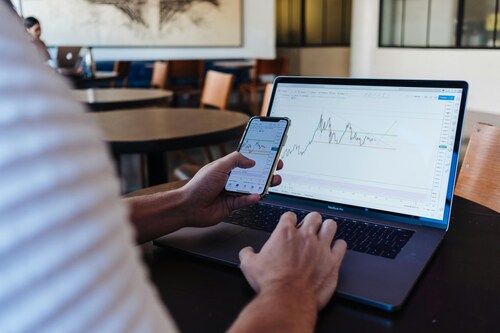As a trader, the most important thing you need after a plan and a strategy is a trading platform to begin your journey. They facilitate the whole act of trading of any kind.
Trading platforms give you the tools to learn, analyse, and actually make your trades. But they come with different features and for different trading purposes. To choose the right type of platform for your trading journey, you need this information.
So, let’s talk about what exactly a trading platform is, what types exist, and what you should look for in one.
What Is a Trading Platform?
A trading platform is software that lets you buy, sell, and manage financial assets like forex, stock, crypto, and other assets. It acts as the bridge between you and the markets, and can work on both desktop and mobile.
Some platforms are basic and just give you a way to place trades, while others come loaded with tools like advanced charting, indicators, testing systems, and even automated trading.
If you’ve ever done an MT4 download, for example, you’ve already been introduced to one of the most popular trading platforms out there.
Types of Trading Platforms
Not all traders want the same things. That’s why platforms are often built for different types of users.
Here are the most common types:
Proprietary Trading Platforms
These are trading platforms that are developed by specific brokers, and tend to focus on user-friendly interfaces and basic trading tools.
Proprietary platforms are good for beginners, and also offer advanced features that are specific to the broker’s platform.
Third-Party Platforms
These are standalone platforms that are not tied to one specific broker. They are developed by a separate company that is not tied to a single broker.
You can usually connect multiple brokers or accounts, and the features are a lot more advanced. These platforms are also referred to as commercial platforms, and popular options include MetaTrader 4 (MT4) and MetaTrader 5 (MT5).
Web-Based Platforms
These platforms run on browsers and don’t need to be downloaded. This is a great option for quick access on any device, but web-based platforms sometimes lack the power of desktop tools.
Mobile Trading Apps
These are perfect for casual traders or trading on the go. If you’re someone who likes to keep tabs while out and about, a mobile trading platform is a good fit.
You won’t get the full range of tools here, but mobile apps are constantly improving. And they can do the most important tasks of buying and selling trades.
Features to Look for
Now that you know what types exist, let’s jump to what makes a good trading platform.
Some must-have features of a trading platform include:
- Real-time market data. You need to see price changes as they happen.
- Charting tools. Technical analysis is a part of modern trading.
- Execution speed. A good platform executes trades fast and without lag.
- Backtesting system. If you’re building your own strategy, backtesting lets you see how those strategies might perform.
- Customization. Being able to personalise your charts and set alerts is a huge bonus.


